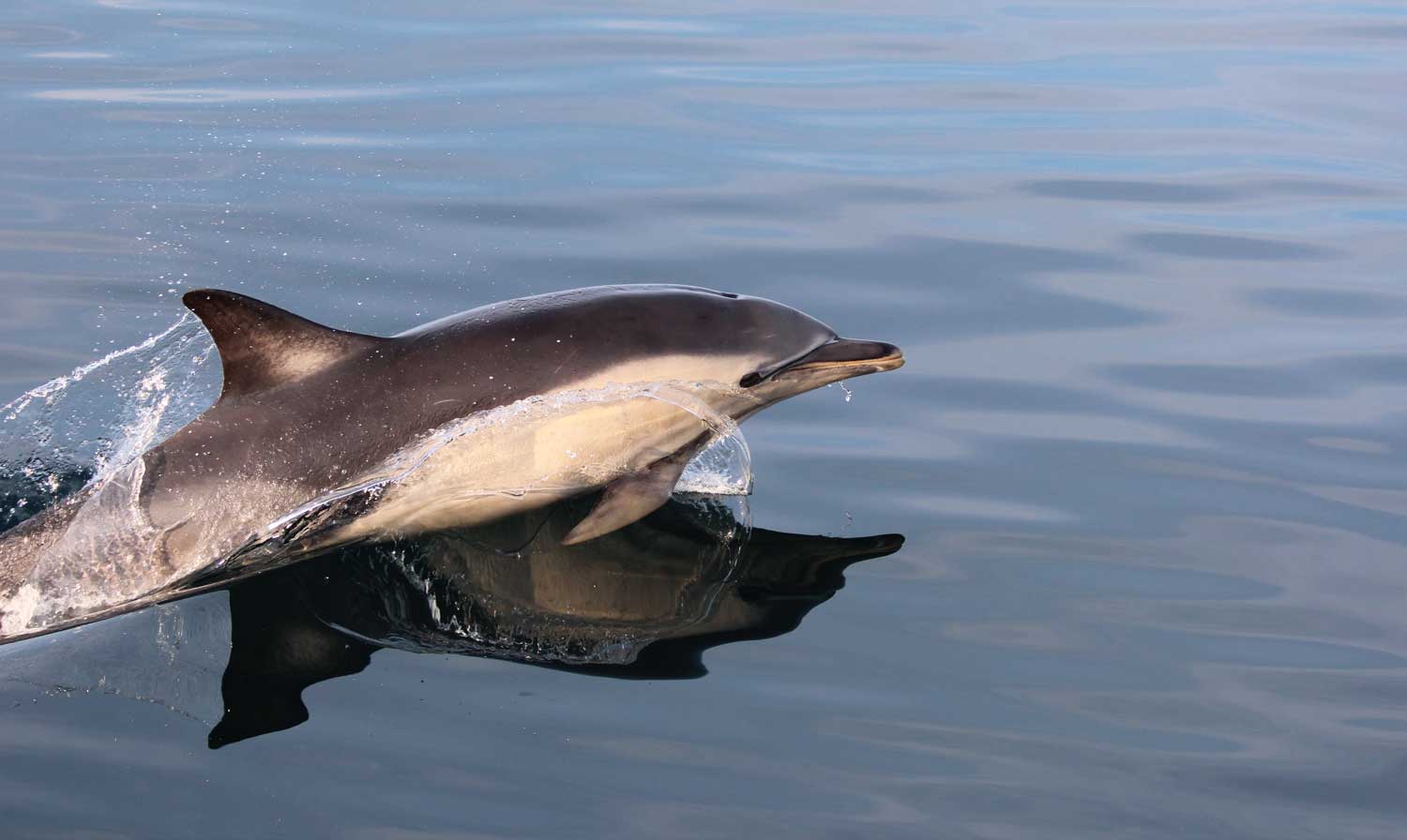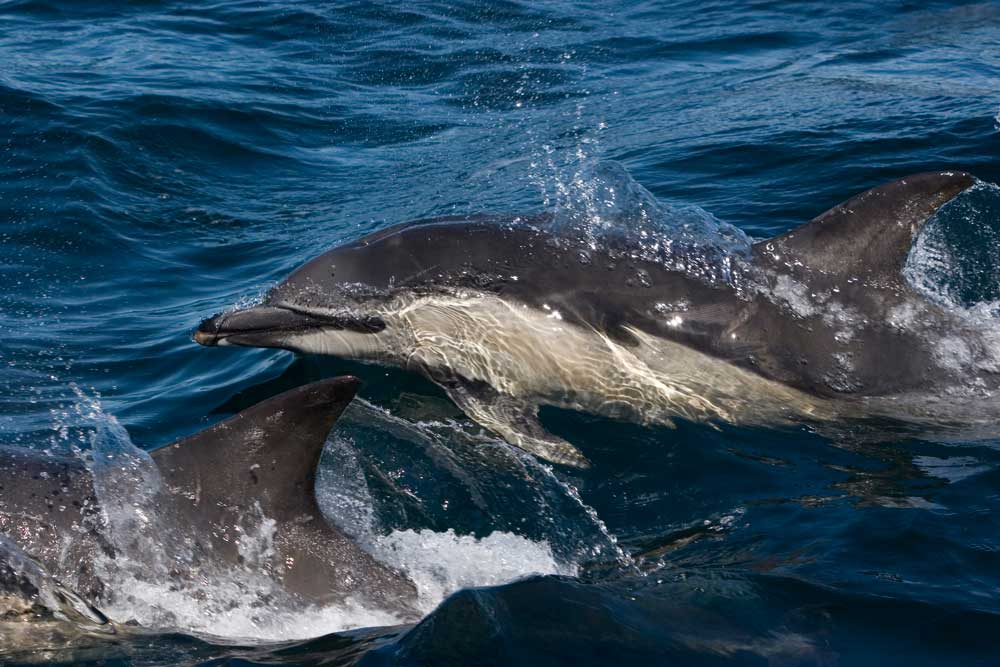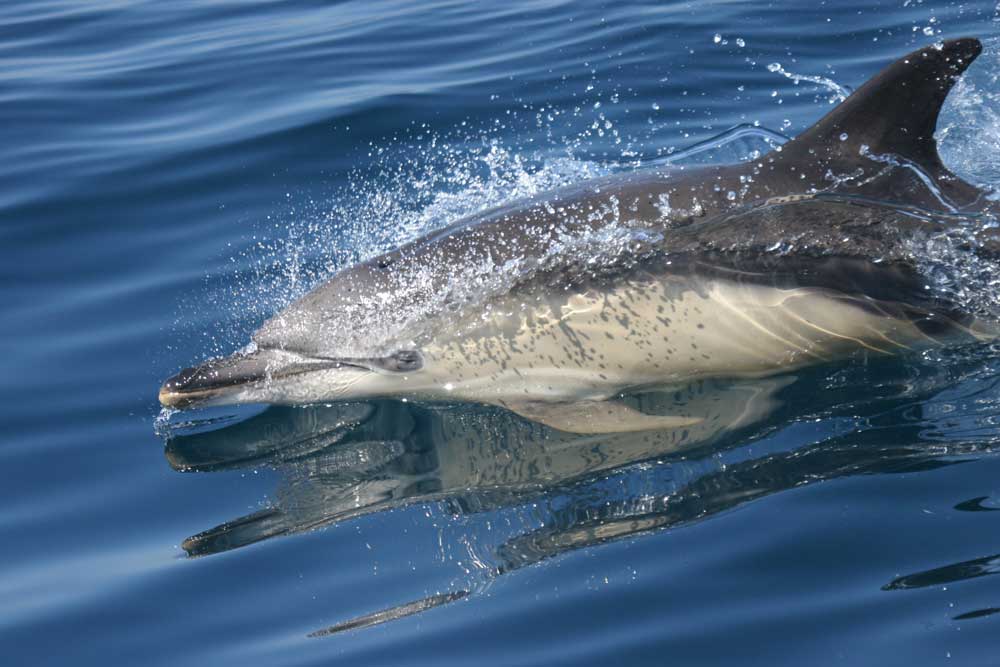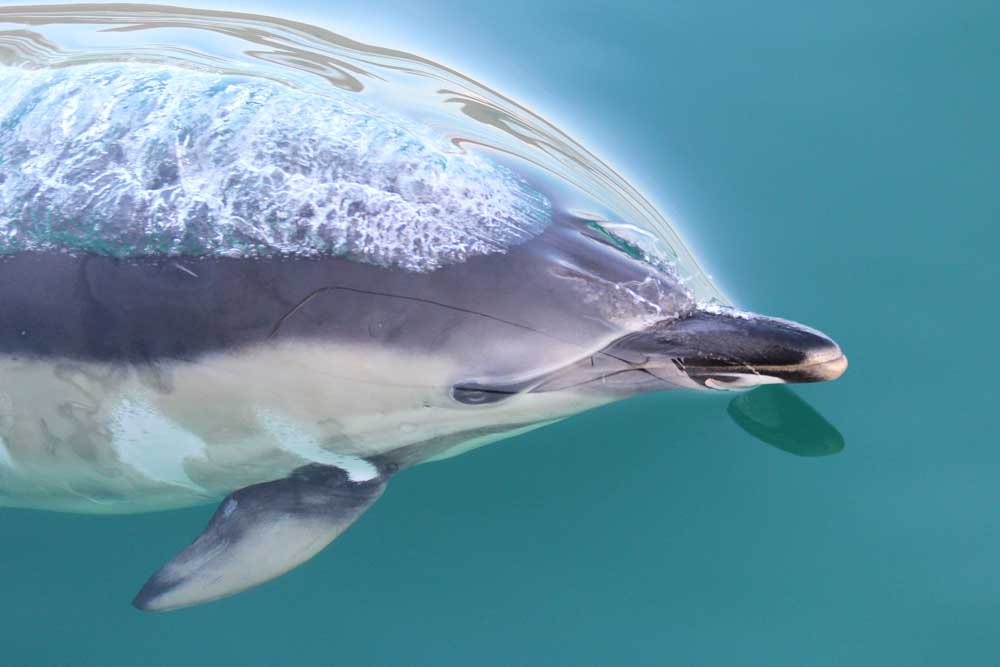
Latin: Delphinus delphis
Gaelic: Leumadair cumanta
CETACEAN FACTFILE:
Months: May – October
Length: Up to 2.4 metres
Range: Temperate and tropical waters worldwide
Threats: Accidental capture in fishing gear, pollution
Diet: Variety of fish and squid
PHYSICAL DESCRIPTION
Common dolphins have a distinctive creamy yellow hourglass pattern along the sides, with a dark grey back, tail and flippers and a cream coloured belly. Adult common dolphins measure between 1.7 to 2.4 metres long and weigh about 150 kg.
BEHAVIOUR
In Hebridean waters, common dolphins are usually found in groups of about 10 to 30 individuals, but can be seen in large, very active groups consisting of several hundred animals. Their leaping and splashing can sometimes be seen from several kilometres away and is often what gives away their presence. They are fast swimmers, reaching speeds in excess of 15 mph and are capable of travelling vast distances in a short time. Common dolphins are very acrobatic and often leap clear of the water. Their high-pitched vocalisations can, at times, be heard by humans above the surface of the water. These dolphins are inquisitive and sociable animals and often approach boats to ride the bow wave.
HABITAT AND DISTRIBUTION
Globally, common dolphins inhabit tropical and warm temperate seas, and they can be found in coastal and offshore waters. Off western Scotland, common dolphins are generally summer visitors with sightings peaking between May and October, when food is most abundant. However, since 2014 common dolphins have been reported in every month of the year.
FOOD AND FORAGING
The common dolphin has 82 to 108 sharp, pointed teeth on each jaw, and eats a varied diet of squid and fish, such as herring, mackerel and other mid-water schooling fish. Individuals will co-operate to herd fish in order to catch them more easily. They are often seen in association with diving gannets feeding on the same fish. Toothed cetaceans (odontocetes) like common dolphins usually swallow their prey whole, using their teeth to grasp their prey but not to chew it.
STATUS AND CONSERVATION
There has been an increase in common dolphin numbers in the Hebrides in recent years, and ongoing research is important to monitor this trend. Common dolphins are thought to be one of the most abundant cetacean species, with population estimates suggesting that there are several hundred thousand animals globally, yet overall numbers have declined due to a combination of factors. There is evidence that significant numbers of common dolphins are accidentally caught in open sea trawl and drift nets; they seem particularly vulnerable to this threat because they are attracted by the fish inside the nets but do not jump over them to escape. Common dolphins are also subject to the same threats as other cetacean species including the pollution and degradation of the marine environment, injury and disturbance from vessels, and decreasing food resources due to overfishing.







